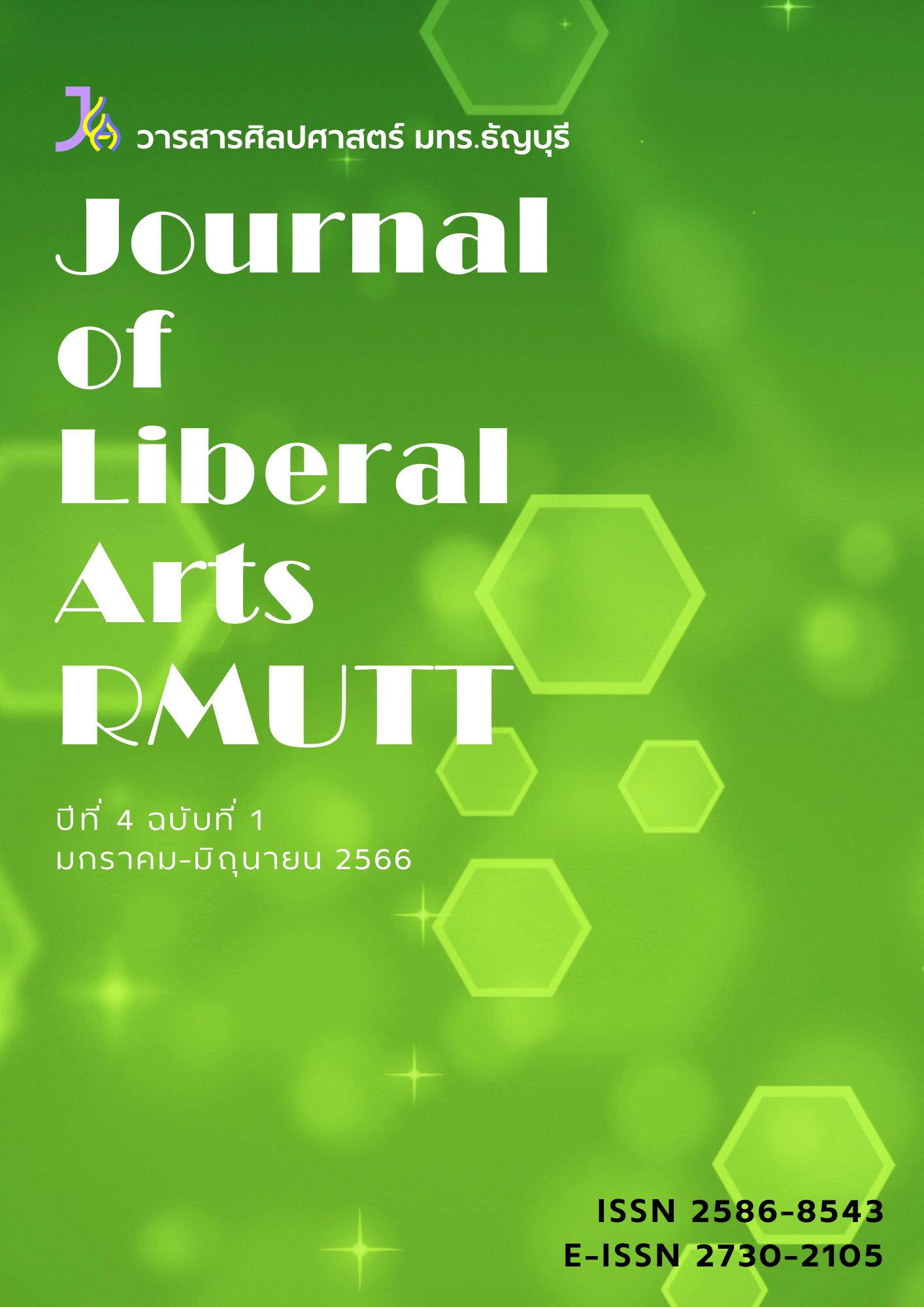Lexical Expressions of Compare and Contrast in Business News Articles
Keywords:
Lexical expressions of compare, Lexical expressions of contrast, Business news articlesAbstract
This study aimed to investigate the use of lexical expressions of compare and contrast in business news articles. Related previous studies concerned with this type of study observed the use of lexical expressions of compare and contrast in the writing of EFL learners (i.e., Japanese students, Indonesian students and Thai students) and the materials of applied linguistics research articles. However, this study aims to contribute to the field by using the materials of business news articles to investigate the use of lexical expressions of compare and contrast in English. The source of data was gathered from the business section in The New York Times, which is the national American newspaper that gains the highest circulation. The dataset of this daily business news articles was collected between January 1, 2023 and February 28, 2023. A total of approximately 120,000 words contains 280 tokens with lexical expressions of compare and contrast. In regard to the data analysis, the framework of lexical expressions of compare and contrast in this study follows Swan (2016). After the process of data analysis, three linguists whose mother tongue is English were instructed to validate the data analysis via inter-rater reliability to ensure their validity and reliability. The results show that the percentages of lexical expressions of compare and contrast in business news articles are 59.29 percent and 40.71 percent, respectively. This phenomenon is explained by principle of informality, principle of subjectivity and opposite information via antonyms. It is expected that the results in this study will be beneficial to learners of English as a Foreign Language (EFL) in terms of applying the preference styles of lexical expressions of compare and contrast in business writing correctly and appropriately.
References
Almusharraf, N., & Alotaibi, H. (2023). An error-analysis study from an EFL writing context: Human and Automated Essay Scoring Approaches. Technology, Knowledge and Learning, 28(3), 1015-1031.
Bearak, M. (2023). Inside the global race to turn water into fuel. The New Yorks Times. 7. Retrieved from https://www.nytimes.com/2023/03/11/climate/green-hydrogen-energy.html
Dirven, R., & Radden, G. (2007). Cognitive English grammar. Amsterdam: John Benjamins.
Gelbukh, A. & Kolesnikova, O. (2012). Semantic analysis of verbal collocations with lexical function. New York: springer.
Hamed, M. (2014). Conjunctions in argumentative writing of Libyan tertiary students. English Language Teaching, 7(3), 108-120.
Hinkel, E. (2012). Teaching academic ESL writing: Practical techniques in vocabulary and grammar. New York: Routledge.
Halliday, M. A. K., & Hasan, R. (1989). Language, context and text: aspects of language and meaning. London: Edward Arnold.
Hylang, K. & Jiang, F. (2017). IS academic writing becoming more informal?. Journal of English for Specific Purposes, 45, 40-51.
Maheshwari, S. & Mccabe, D. (2023). Finding a buyer for TikTok may not be so easy. The New Yorks Times, 6.
Retrieved from https://www.nytimes.com/2023/03/16/business/media/tiktok-buyer-biden.html
Martin, P. (2010). The Wall Street Journal Guide to Business Style and Us. New York: Simon and Schuster.
Mittal, R. (2014). Role of newspaper in English language learning. International Journal of Research (UR), 1(6), 689-693.
Narita, M., Sato, C., & Sugiura, M. (2004). Connector usage in the English essay writing of Japanese EFL Learners. LREC, 27(1). 1171-1174.
Oshima, A., & Hogue, A. (2006). Writing academic English. USA: Pearson Longman.
Soleimani, H., & Najafgholian, S. (2014). The relationship between creativity in thinking and writing performance of Iranian EFL learners on comparison/contrast. International Journal of English Language and Literature Studies, 3(3), 223-233.
Santangelo, T. (2014). Why is writing so difficult for students with learning disabilities? A narrative review to inform the design of effective instruction. Learning Disabilities: A Contemporary Journal, 12(1), 5-20.
Seo, Y., & Kim, C. (2020). The use of short fiction in a rriting Class: Pedagogical suggestions for secondary level teachers in EFL settings. English Teaching, 75(1), 119-139.
Swan, M. (2016). Practical English grammar. Oxford: Oxford University Press.
Toba, R., Noor, W. N., & Sanu, L. (2019). The current issues of Indonesian EFL students’ writing skills: Ability, problem, and reason in writing comparison and contrast essay. Dinamika Ilmu, 19(1), 57-73.
Watcharapunyawong, S. & Usaha, S. (2013). Thai EFL students’ writing in different text types: The interference of the first language, 6(1), 67-78.
Wongkittiporn, A. (2022). Semantic interpretations of passive constructions in business news articles. Journal of Language, Religion and Culture, 11(2), 1-29.
Downloads
Published
How to Cite
Issue
Section
License
Copyright (c) 2023 Journal of Liberal Arts RMUTT

This work is licensed under a Creative Commons Attribution-NonCommercial-NoDerivatives 4.0 International License.








